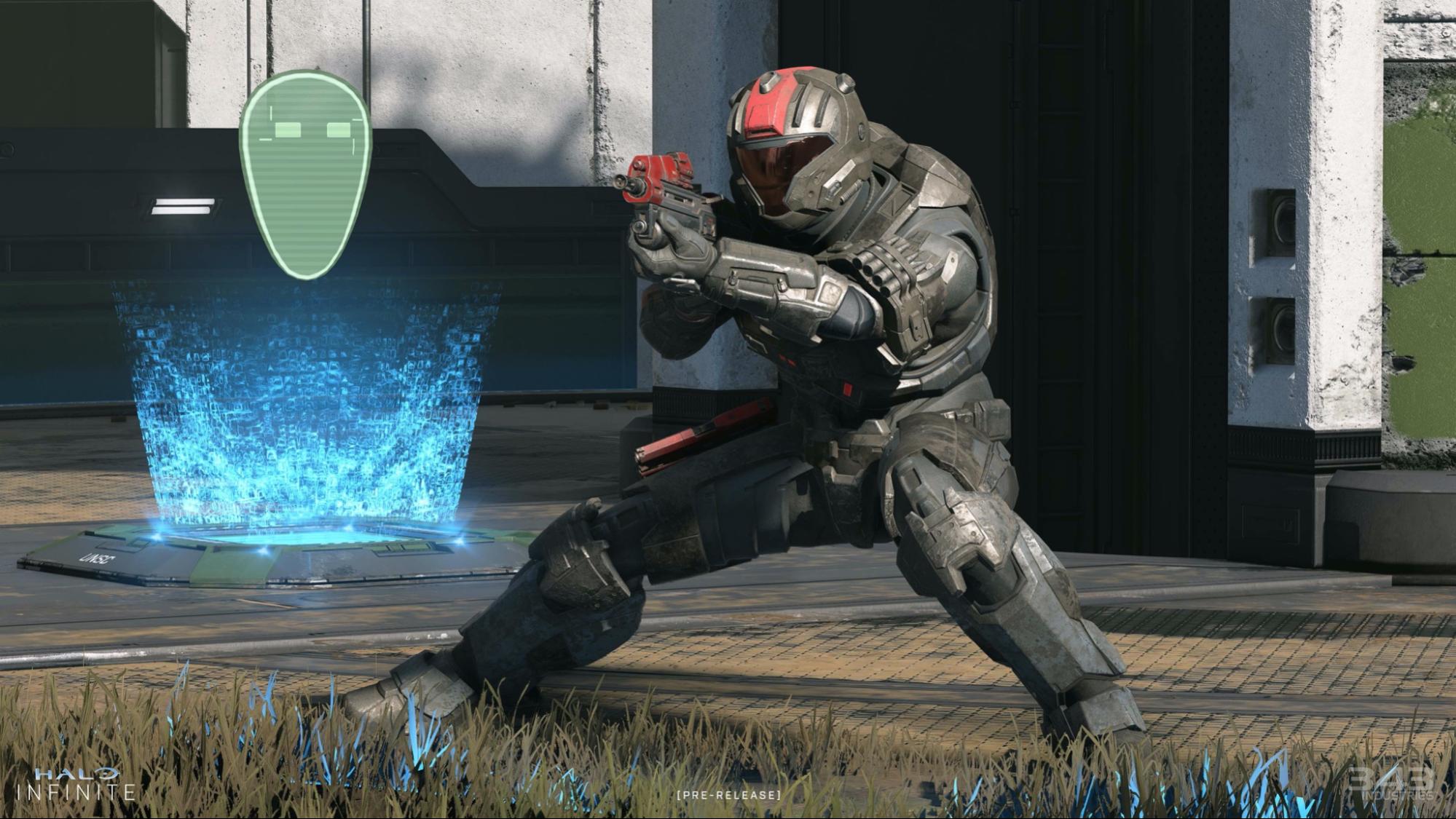The first thing 343 had to get right was the sandbox - were Halo’s iconic guns, grenades, abilities, maps and vehicles fun, and more importantly did they all interact with each other? A physics-driven sandbox in the past led to moments where a grenade you threw would accidentally hit a teammate and bounce right back into your face… oops. Or it would allow you to do things like fire a rocket into a gravity lift, have it fly all the way to the top and kill whoever was unfortunate enough to be waiting up there. Even using the gravity hammer to send vehicles flying off the map was enough to elicit a chuckle. Moments like these were so fun because they were unexpected. These weren’t features that were advertised, and most of the weird physics tricks you could pull off were only useful in certain situations. This meant every time something goofy happened it was a shock and a discovery. After playing three weekends of Halo Infinite tech previews, I can confidently say that the game understands what made Halo’s multiplayer great - and hilarious - in the first place. It was that every object in the game felt physical and acknowledged each other’s existence. If you thought something made logical sense, chances were, you’d be able to pull it off in the game. The same is true for Halo Infinite. There’s plenty of experimentation to be had with Infinite’s sandbox. I’ve seen people pull off some incredible stunts reflecting skewer shots across the battlefield and grappling grenades in midair. In one game of Capture the Flag, I drove a vehicle right into the enemy’s flag and pushed it all the way to the opposite side of the map. I knew what I was feeling was nostalgia: there’s the initial disbelief that what you’re doing is even possible - your jaw hits the floor - then there’s the panic as enemies are firing from all angles and you actually need to execute this fleeting idea that you had - your palms start sweating. Finally there’s the triumph as you get that flag to the finish line in the most unexpected way - you start planning how you’re going to tell everyone about this, perhaps on Eurogamer. Even things that have been advertised feel dramatic, every time. After being hijacked in my cosy ghost, I then grappled back onto it and counter-hijacked the vehicle again. Moments like this, or throwing a sticky bomb into a group of enemies while invisible, just feel like shots of pure joy. I doubt I’ll be able to recreate many of these moments considering all the variables in any Halo match. Once I had gotten over the nostalgia of accidentally doing cool stuff, the thing that had me chuckling the most was the writing… in a Halo multiplayer game? This time around, players can equip a personal AI who comes with different voices, distinct personalities and unique dialogue. These AI give you moment-to-moment updates on matches but they also comment on your performance in satisfying ways. My favourite character was the innocent little triangle guy, Fret. After landing a headshot, Fret would exclaim, “I’m glad I’m in your head and not that head… or what’s left of it.” Their commentary acts as a reward for great plays and a light hearted punctuation after a heated firefight. I love how the AI also shows a reverence to Halo’s history; one of them has a line about a pizza party, a reference to when fans flooded the 343 office with pizza after the Master Chief Collection was announced for PC. It’s also at least novel to hear a spartan from the year 2560 shout “over yonder!” as if they’re charging into a medieval skirmish. A good comedy doesn’t get very far without a good cast so thankfully Infinite delivers in this regard. All of this is enhanced by Halo’s place in meme culture for the last 20 years. From hearing my older brother chant the Halo theme over Xbox Live to seeing amazing internet recreations of the song in school bathrooms and apartment staircases, the series has been a source of internet comedy since its inception. This history has recontextualised a lot of my experience with the game. For example, tea-bagging (the act of repeatedly crouching and standing up) was once seen as a toxic way to assert dominance over a foe after you’ve killed them. No wonder since most open-mic chats in the Xbox 360 were heated at best, and hateful at worst. Since then, there have been endless memes about tea-bagging in the Halo community, so much so that I’ve come around on this tradition. This time around, it’s more akin to Bayonetta spanking demons; it’s taunting in the goofiest way possible. When I (rarely) die, I’m not even mad at an enemy tea-bag, it’s kind of an inside acknowledgement from another fan: “Ah, a fellow spartan.” Internet humour has had the same effect on the Halo community that the co-op campaign had on me and my siblings: we come together to trivialise experiences that we’d otherwise kill each other over. Community discourse and meme culture have made me reinterpret many of the series’ quirks and now they’re just the amusing cherry on top of a glorious cake. Halo Infinite is up there with comedy greats like The Good Place, Bojack Horseman, and Halo 3. If you ignore the epic bravado of Halo’s campaigns, the series has always been about laughing. Laughing at other people, laughing at yourself, laughing at the, ahem, infinite memes. I have a feeling Halo Infinite’s community and collection of tools is going to fuel a lot more laughs in the years to come. I can’t wait to see what else is possible on December 8th.

